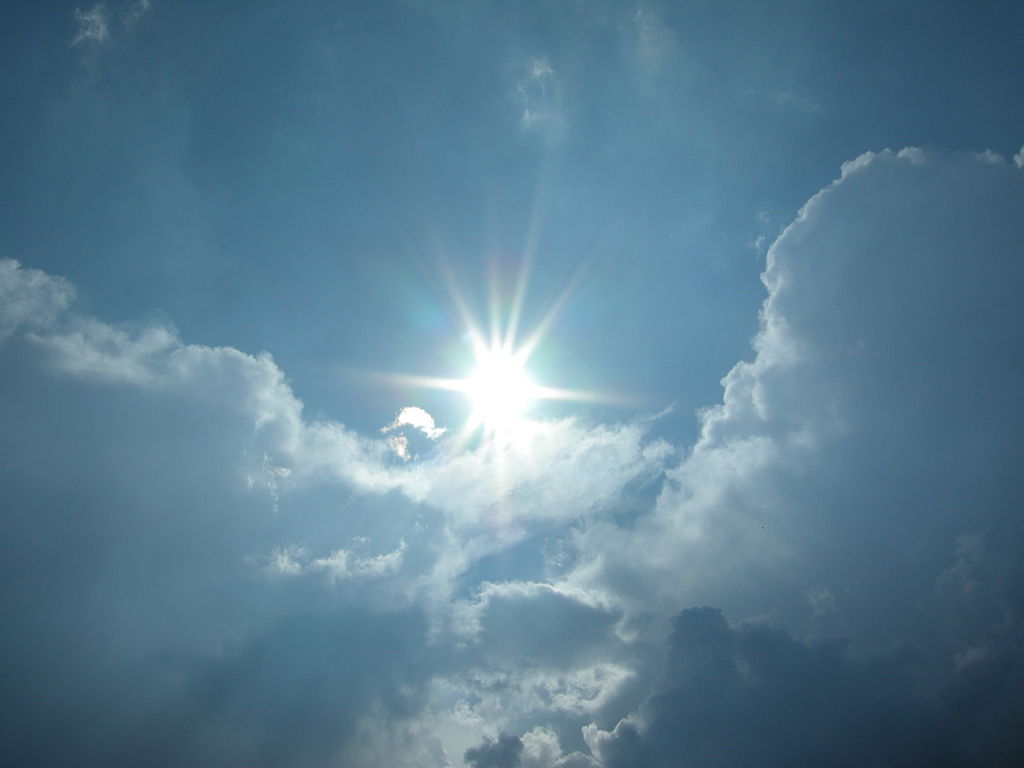After collecting these two resources from this post, you’ll be all set for a terrific lesson on the Earth’s Sun. First, read the article. Have you ever wondered exactly how big Earth’s sun is? Do you know how far away the sun is from Earth? Did you know the polarity of the sun reverses every 11 years? Learn the answers to these questions and more interesting facts about Earth’s Sun in this article.
Next, check out the organizer. Before you read further, grab this PDF file with both the article and the organizer.
Get Free Earth’s Sun Graphic Organizer +
Ten Interesting Facts…the Sun by clicking here.


Earth’s Sun – The Organizer
Each circle on the sun organizer asks students to describe something:
- sun’s classification, age, and temperature
- size of our sun
- life cycle of our sun
- rotation and orbit of the sun
- What will happen to Earth as the sun expands?
The handout provides three versions of the organizer. The first has blanks for students to answer the questions. The second is a close exercise for students to complete the sentences. For example…
Our sun is ___________ ________ years old. It is a ______ ________ with a diameter of __________________________ kilometers. The surface temperature is ___________ degrees Fahrenheit (________ degrees Celsius), and its core is around _____ million degrees Fahrenheit (________________ degrees Celsius).
The final copy is an answer key with the answers provided in full sentences like this one.
Our sun is 4.59 billion years old. It is a Yellow Dwarf with a diameter of 1,392,684 kilometers. The surface temperature is 10,000 degrees Fahrenheit (5500 degrees Celsius), and its core is around 27 million degrees Fahrenheit (13,600,000 degrees Celsius).
Ten Interesting Facts…Earth’s Sun
1. Description
Our sun is 4.59 billion years old. It is a Yellow Dwarf with a diameter of 1,392,684 kilometers. The surface temperature is 10,000 degrees Fahrenheit (5500 degrees Celsius), and its core is around 27 million degrees Fahrenheit (13,600,000 degrees Celsius).
2. Size
The sun is 960,000 times bigger than Earth. It makes up around 99.86% of the Solar System’s mass. Jupiter takes up most of the final mass. If you flatten out Earth, it would take 11,990 of them to cover the surface of the Sun.
| Diameter | Ratio of the Sun Compared to . . . |
|
| Sun | 1377648 km | |
| Mercury | 4880 km | 1 to 277. |
| Venus | 12104 km | 1 to 113. |
| Earth | 12756 km | 1 to 108. |
| Moon | 3476 km | 1 to 416. |
| Mars | 6788 km | 1 to 208. |
| Jupiter | 142740 km | 1 to 9.68 |
| Saturn | 120034 km | 1 to 11.4 |
| Uranus | 51152 km | 1 to 26.8 |
| Neptune | 49620 km | 1 to 27.7 |
| Pluto | 2296 km | 1 to 625 |
3. Growing
The sun is slowly becoming brighter. In about a billion years from now, the Sun will grow so hot that life on Earth will be destroyed. Liquid water will dry up. In another 7 billion years, the Sun will reach the giant phase and will expand to engulf Earth.
4. Changing
After expanding, the sun will collapse to be approximately the size of Earth. When this happens, it will be called a dwarf white. About 74% of the Sun is hydrogen. It has already burned off about half of its stored hydrogen.
5. Shape
The sun is almost a perfect sphere.
6. Light
Light travels at the rate of 300,000 kilometers per second. Because of this, light from the Sun takes 8 minutes and 20 seconds to reach Earth.
7.Orbit
Just as the Earth orbits the sun, the sun orbits the center of the Milky Way. This takes 225-250 million years to complete.
8.Rotation
Because the sun is a sphere of hydrogen gas, different parts rotate at different speeds. The area near the equator takes about 25 days to complete one rotation, and the areas near the poles take around 36 days.
9. Magnetic Polarity
Every 11 years, the Sun reverses its magnetic polarity. The north magnetic pole becomes the south pole and the south pole becomes the north pole.
10. Gravity
Gravity is so strong on the sun that a person weighing 150 pounds on Earth would weigh more than 4,000 pounds on the Sun.
| The weight of a 150-pound person on . . . |
|
| Sun | 4060.8 |
| Mercury | 56.7 |
| Venus | 136 |
| Earth | 150 |
| Moon | 24.9 |
| Mars | 56.5 |
| Jupiter | 354.6 |
| Saturn | 159.6 |
| Uranus | 133.3 |
| Neptune | 168.7 |
| Pluto | 10 |

Information Sources
http://space-facts.com/the-sun/
http://www.sciencekids.co.nz/sciencefacts/space/sun.html
http://facts.randomhistory.com/2009/07/06_sun.html




